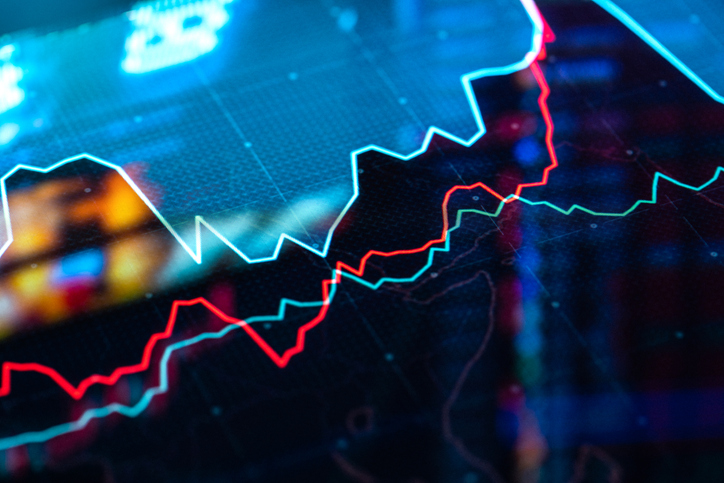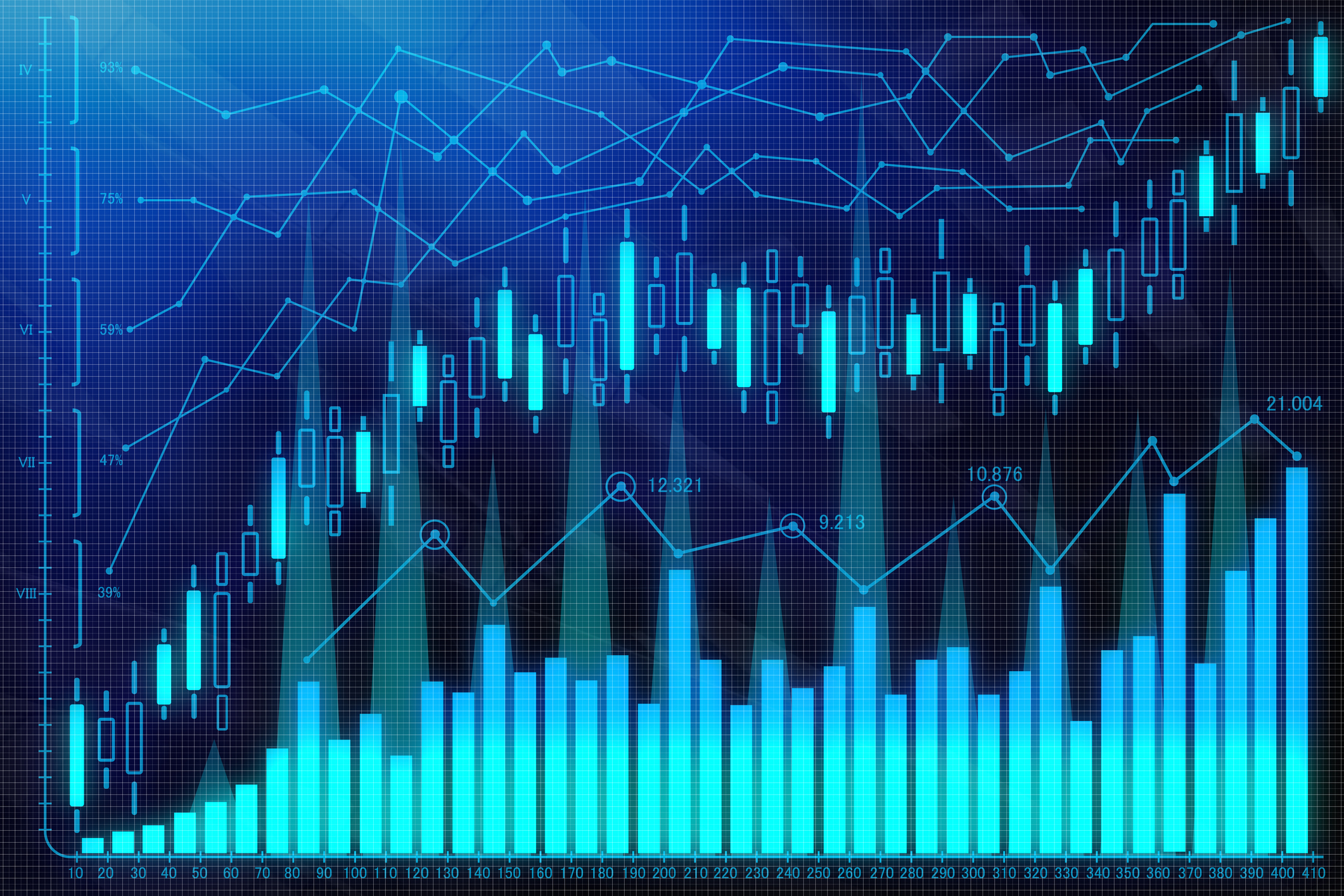Is It Time to Invest in Gold?
Stock market volatility has given investors gold fever. If you chase the rally, don’t overdo it.

Gold, which did little except glitter for most of the past five years, has seen price gains this year that rival Standard & Poor’s 500-stock index. Gold began the year at $1,279 an ounce, and it is currently trading at $1,498, a 17.1% gain. The S&P 500 is up just a shade more. (Returns and other data are through August 9.)
The price of easy money. The Fed cut its key federal funds rate by a quarter of a percentage point in July, the first rate cut since 2008. Kiplinger expects two more rate cuts this year. The tax reform passed in 2017 is estimated to pump more than $1 trillion into the economy over the next 10 years. At least in theory, such economic stimulus in an expanding economy could lead to rising prices, the result of too much money chasing too few goods and services.
Typically, lower U.S. interest rates also bring down the value of the dollar on the world currency exchanges, and that, too, is positive for gold, which is often viewed as an alternative currency. Money follows yields, such as those from Treasury bills, and when U.S. yields fall, money goes to other markets, denominated in other currencies, to get higher returns. In July, President Trump said he had not ruled out a U.S. intervention in world currency markets to weaken the dollar further.
From just $107.88 $24.99 for Kiplinger Personal Finance
Become a smarter, better informed investor. Subscribe from just $107.88 $24.99, plus get up to 4 Special Issues

Sign up for Kiplinger’s Free Newsletters
Profit and prosper with the best of expert advice on investing, taxes, retirement, personal finance and more - straight to your e-mail.
Profit and prosper with the best of expert advice - straight to your e-mail.
Gold prices thrive on economic uncertainty, and escalating trade tensions have delivered that in spades. “The wild card is the trade war with China,” says Lindsey Bell, investment strategist at CFRA. “If that intensifies, it’s a great environment for gold.” Worries about the dollar and global trade have prompted foreign central banks to increase their gold reserves. Central banks, mainly those in emerging markets, bought 224.4 tons of gold in the second quarter of 2019.
What could derail the rally in gold? Deflation is one risk, although gold has held up well in past periods of falling prices. A larger threat to gold is a global recession during which consumers, especially in China and India, reduce their jewelry purchases. In the end, gold’s value is largely psychological—after all, it pays no dividends and has no earnings. Nevertheless, psychology can be a powerful price driver.
Many advisers recommend as much as a 5% stake in gold—partly as insurance against financial catastrophe and partly as a portfolio diversifier. Gold typically does not move in tandem with stocks, which can improve your returns, adjusted for risk, over long periods of time.
But because gold is prone to large drops, it isn’t an easy investment for most people to hold. “Gold is useful in a portfolio in the same way an F-35 is useful in national defense,” says William Bernstein, a financial adviser and author of the investing book Deep Risk. “Very few people are trained to use it properly.” For example, gold swooned from $850 an ounce in 1980 to $273 an ounce in 1998—a string of losses that would make many investors abandon a gold strategy. “It’s the hardest asset to hold long term in your portfolio,” Bernstein says.
How to invest. If you want to own the bullion itself, you can buy one-ounce American Gold Eagle coins from a dealer, although you’ll pay a markup of 5% to 8%. (Check the current spot gold rate at websites such as www.kitco.com before you buy to see if you’re getting a good price. It can pay to shop around.) Skip collectible coins, which can carry a big premium for rarity. And take a pass on the proof versions that the U.S. Mint sells: They have a beautiful finish but a high price tag. At the moment, a one-ounce American Eagle will set you back about $1,500.
If you simply want gold as a part of your portfolio, consider a commodity gold exchange-traded fund, such as iShares Gold Trust (symbol IAU, $14). The ETF buys and sells physical gold, held by a third-party custodian, and charges 0.25% in annual expenses. A slightly more expensive choice is SPDR Gold Shares (GLD, $141), which also holds physical gold and charges 0.40%.
You might also buy shares of gold-mining companies. Mining stocks tend to rise and fall more than the metal itself because once the price of gold covers production costs, any increase is pure profit. For example, consider a company that produces gold for $1,000 an ounce. If the price of gold were to rise from $1,100 an ounce to $1,200, a 9% increase, the firm’s earnings would double, from $100 per ounce to $200 an ounce.
Gold’s long-dead period from 2013 to 2018 prompted many gold-mining companies to “repair their balance sheets, buy back stock and create shareholder value,” says Will Nasgovitz, CEO of the Heartland Funds. CFRA analyst Matthew Miller recommends Newmont Goldcorp (NEM, $39), up 16% this year. The company sells at 23 times earnings, compared with 17 for the S&P 500. It produces gold at a cost of $900 an ounce, however, and if gold continues its rise, Newmont earnings should rise with it.
Mutual funds and ETFs that invest in gold-mining stocks tend to have relatively high expense ratios. But one good fund choice is American Century Global Gold (BGEIX), up 38.2% so far this year. It charges just 0.67% a year in expenses. Elizabeth Xie and Yulin Long have been managing the fund since May 2016—not a long time, but Long has been at American Century since 2005, and Xie has been there since 2007.
For those who prefer a lower-cost indexed approach, VanEck Vectors Gold Miners ETF (GDX, $29) gives you exposure to the sector for 0.52%. The fund is up 39.2% this year.
Gold and gold-mining stocks are definitely not core portfolio holdings. But if you’re looking for a bit of protection in uncertain times, adding a dollop of gold could make your portfolio shine a bit more brightly.
Profit and prosper with the best of Kiplinger's advice on investing, taxes, retirement, personal finance and much more. Delivered daily. Enter your email in the box and click Sign Me Up.

-
 Crypto Trends to Watch in 2026
Crypto Trends to Watch in 2026Cryptocurrency is still less than 20 years old, but it remains a fast-moving (and also maturing) market. Here are the crypto trends to watch for in 2026.
-
 Original Medicare vs Medicare Advantage Quiz: Which is Right for You?
Original Medicare vs Medicare Advantage Quiz: Which is Right for You?Quiz Take this quick quiz to discover your "Medicare Personality Type" and learn whether you are a Traditionalist, or a Bundler.
-
 Ask the Editor: Capital Gains and Tax Planning
Ask the Editor: Capital Gains and Tax PlanningAsk the Editor In this week's Ask the Editor Q&A, Joy Taylor answers questions on capital gains tax rates and end-of-year tax planning
-
 Small Caps Hit a New High on Rate-Cut Hope: Stock Market Today
Small Caps Hit a New High on Rate-Cut Hope: Stock Market TodayOdds for a December rate cut remain high after the latest batch of jobs data, which helped the Russell 2000 outperform today.
-
 UNH Sparks a 408-Point Surge for the Dow: Stock Market Today
UNH Sparks a 408-Point Surge for the Dow: Stock Market TodayThe best available data right now confirm both a slowing employment market and a December rate cut, a tension reflected at the equity index level.
-
 Stocks Bounce Back With Tech-Led Gains: Stock Market Today
Stocks Bounce Back With Tech-Led Gains: Stock Market TodayEarnings and guidance from tech stocks and an old-school industrial lifted all three main U.S. equity indexes back into positive territory.
-
 Dow Slides 427 Points to Open December: Stock Market Today
Dow Slides 427 Points to Open December: Stock Market TodayThe final month of 2025 begins on a negative note after stocks ended November with a startling rally.
-
 Stocks Extend Win Streak on Black Friday: Stock Market Today
Stocks Extend Win Streak on Black Friday: Stock Market TodayThe main indexes notched wins in Friday's shortened session, with the blue-chip Dow Jones Industrial Average closing higher on the month.
-
 Dow Adds 314 Points to Thanksgiving Rally: Stock Market Today
Dow Adds 314 Points to Thanksgiving Rally: Stock Market TodayInvestors, traders and speculators enjoy the best Thanksgiving Week gains for the major stock market indexes in more than a decade.
-
 Dow Gains 664 Points as Rate-Cut Hopes Rise: Stock Market Today
Dow Gains 664 Points as Rate-Cut Hopes Rise: Stock Market TodayMarkets are pricing in higher odds for a December rate cut, fueling a major rally in stocks ahead of the Thanksgiving holiday.
-
 Nasdaq Rises 2.7% as Musk Tweets TSLA Higher: Stock Market Today
Nasdaq Rises 2.7% as Musk Tweets TSLA Higher: Stock Market TodayMarkets follow through on Friday's reversal rally with even bigger moves on Monday.